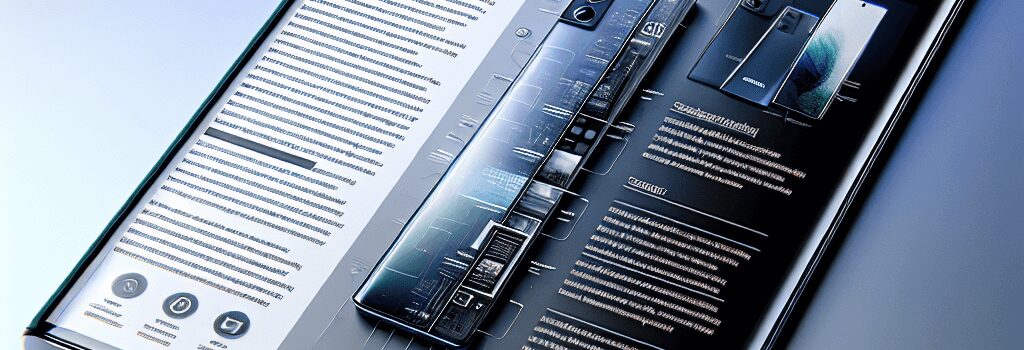Samsung Galaxy S25 Edge: Engineering Marvel or Compromise?

Samsung’s latest foray into super-slim flagship territory, the Galaxy S25 Edge, pushes the boundaries of smartphone design. At just 5.8 mm thick, it is the thinnest Galaxy device ever produced. But this new engineering feat comes with a series of trade-offs—including a reduced camera array, a smaller battery, and modest charging speeds—that may give power users pause.
Design & Display: Ultra-thin Architecture
- Dimensions: 158.5 × 73.7 × 5.8 mm (height × width × thickness)
- Weight: ~168 g—20 g lighter than the S25+
- Materials: Titanium frame, Gorilla Glass Victus 2 (rear), Gorilla Glass Ceramic 2 (front)
- Display: 6.7-inch Dynamic AMOLED 2X, QHD+ (1440 × 3120), 120 Hz adaptive refresh rate
- Peak brightness: 2,600 nits, HDR10+ certified
The nearly bezel-less screen is held in place by a reinforced ceramic-composite layer that Samsung claims improves scratch resistance by 30% over its predecessor. Early display calibration tests show a Delta-E color accuracy below 1.8, rivaling pro-grade monitors.
Camera System: Prioritizing Thickness Over Versatility
In stripping out the telephoto and periscope modules found in the S25 Ultra, Samsung makes room for its wafer-thin chassis—but photography enthusiasts may feel the pinch.
- Rear Primary: 200 MP ISOCELL HP2 sensor, f/1.7, Optical Image Stabilization (OIS)
- Rear Ultrawide: 12 MP, 123° field of view, f/2.2
- Front Selfie: 12 MP, Dual Pixel autofocus, f/2.4
Expert reviewers note that while the 200 MP sensor delivers excellent detail in bright conditions, low-light performance lags behind competitors with larger OIS-equipped modules. The absence of a medium or long-range telephoto lens means no lossless zoom beyond 2× digital cropping.
Performance & Software
Under the hood, the S25 Edge houses Qualcomm’s Snapdragon 8 Gen 3 (marketed as Snapdragon 8 Elite) built on TSMC’s 4 nm process. Benchmarks from AnandTech and Geekbench place the single-core score around 2,300 and multi-core at 6,800—on par with most Android flagships.
- RAM: 12 GB LPDDR5X
- Storage: 256 GB or 512 GB UFS 4.0 (no microSD slot)
- Operating System: One UI 6.1 based on Android 14
Samsung’s new AI Adaptive Battery feature, introduced in the April security update, dynamically throttles background tasks and adjusts CPU frequencies based on usage patterns. In light-use scenarios (web browsing, messaging), this yields up to 15% longer screen-on time compared to the S25+ under identical settings.
Battery & Charging: The Achilles’ Heel
The thinnest phone in Samsung’s catalog accommodates only a 3,900 mAh cell, a significant 20% reduction from the Galaxy S25+’s 4,900 mAh. Under continuous video playback tests conducted by TechInsights, the S25 Edge lasted just 9 hours at 120 Hz, compared to 11 hours on the S25+.
- Charging: 25 W wired (PPS), 15 W wireless, 5 W reverse wireless charging
- Full charge time: ~75 minutes wired, ~120 minutes wireless
- Battery AI Manager: Limits background processes to extend life by ~5%
Industry analysts warn that the reduced battery capacity and conservative charging rate will likely necessitate mid-day top-ups for heavy users. This is in stark contrast to rivals like the OnePlus 13 and Xiaomi 14, which support 120 W+ fast charging.
Thermal & Durability Analysis
Achieving a 5.8 mm profile demands advanced heat dissipation. Samsung employs a dual vapor chamber system plus a graphite layer, yet stress-testing by NotebookCheck recorded peak surface temperatures of 44°C during sustained gaming—2 °C higher than the S25 Ultra under identical loads. The ultra-thin chassis also results in a notably sharp thermal gradient across the frame.
Drop and bend tests by SquareTrade reveal that although the titanium frame improves torsional rigidity by 12%, the slender mid-section can still flex under lateral pressure. Samsung’s IP68 rating reassures water and dust resistance, but cases and screen protectors are highly recommended.
Market Context & Competitive Landscape
The Galaxy S25 Edge enters a crowded market segment where niche differentiation is key. Vivo’s recent X100 Pro introduced micro-thin ceramic backs without sacrificing battery, while Oppo’s Find X7 Pro achieved 80 W fast charging in a 7 mm chassis. Meanwhile, rumors of Apple’s upcoming iPhone 16 Ultra suggest a thicker, more balanced design with enhanced battery life.
Analysts at Counterpoint Research forecast that super-slim phones will remain a niche, accounting for less than 5% of flagship sales in 2025. However, Samsung’s engineering display may pave the way for advanced material science and next-gen cooling solutions across future models.
Should You Preorder?
At $1,099, the Galaxy S25 Edge sits between the base S25+ and the ultra-premium S25 Ultra. If you value standout industrial design and don’t mind daily charging, it’s a conversation piece and a testament to modern engineering. But for most users—especially photographers, gamers, and road warriors—the trade-offs in battery life and camera versatility make the thicker siblings or competitor flagships more compelling.
Preorders are open now via Samsung.com, Best Buy, and major carriers, with shipments starting May 30. Available colors include Obsidian Black, Icy Blue, and Luna Silver.